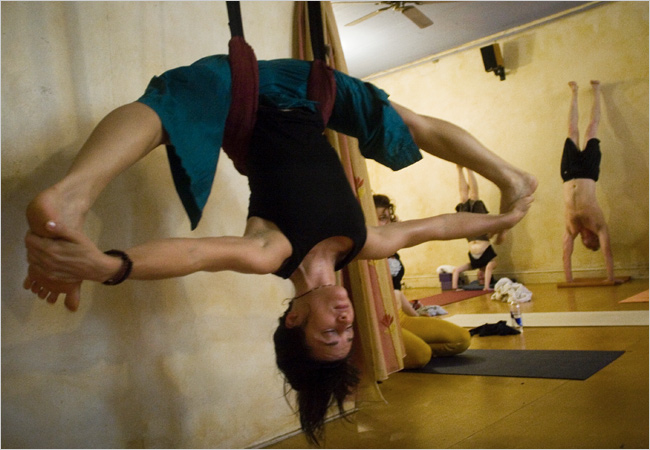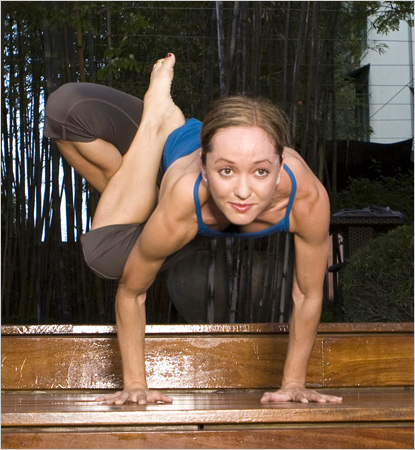In the idle dreams of budding writers, one very popular motif is that of serving at the right hand of a Great Author. There you are, sipping coffee in her sun-dappled kitchen, trading bons mots as you garden together. You become her indispensable sounding board; she begs to see your work; she introduces you to her agent. And lo! The torch is passed.
For me, an aspiring narrative journalist just out of college, it really was a dream come true when The New Yorker writer Susan Orlean offered me a job as her part-time assistant. She paid me very generously for a few hours a week of research, clerical and personal-assisting duties. I tagged along to The New Yorker’s offices and lingered in her beautiful Riverside Drive apartment, watching a writer at work. That was the year Adaptation, the super-meta Charlie Kaufman film version of her great nonfiction novel The Orchid Thief, came out, and Orlean graciously invited me to a special preview screening at the high-rise Sony Building. It was around Christmas, and as I rode home in a taxi—a rare indulgence at the time—past the blazingly lit shops on Madison Ave., I felt I had glimpsed a glamorous world that would soon be mine.
Without clear career tracks outside academia, writers have always needed both financial and moral support from their more established counterparts. Think of Samuel Beckett as a student in Paris, reading to an aged James Joyce. Today, if anything, the economic necessity is even more pressing. MFA and journalism programs are more crowded than ever, yet paying opportunities anywhere near the field are scarcer. Gone are the days when a writer could live the bohemian life in the East Village for months on one book review. As little magazines give way to blogs, university instructors become underpaid adjuncts, and entry-level jobs in newsrooms and at mainstream magazines are outnumbered by unpaid internships, private assistantships are left as an increasingly important option for both paying bills and paying dues.
Usually, assistants work part-time as a combination of researcher, admin and gofer, and earn between $10 and $20 an hour. At the superstar level, personal assistants may be underwritten by the writer’s magazine or lecture bureau, meaning a more lucrative, salaried, full-time position. But normally the arrangement is informal, for better or worse.
Most writers’ assistants see the job at first as a much-needed way to make ends meet. Only gradually do they realize the mentorship possibilities. “My goal going into the job was simply to make some extra money,” says Tara Bracco, a performance poet who worked part time for Fear of Flying author Erica Jong. “I was trying to figure out how to do something I care about and still be able to pay my rent in New York.”
Joelle Hann, a poet and editor for Bedford/St. Martin’s Press who worked for the poet Galway Kinnell in 1999, while she was at New York University, says that while working with him she felt that she was in the presence of “some other being.” More practically, she also points out, “He paid $15 an hour, which was very helpful, because on-campus jobs only paid $7.50.”
Getting these jobs is a matter of luck. The more famous the author, the more likely they get unsolicited applications, and many top-tier novelists and journalists prefer to work alone. In my case, Orlean happened to be visiting Yale when I was a junior, and I had the chutzpah to buttonhole her after her speech. Most assistant hopefuls I spoke with found their jobs by chance, word of mouth or the occasional Craigslist posting.
Chemistry is important, too. Emily Gordon is the managing editor of Print magazine and the editor of emdashes, a blog about The New Yorker magazine. In 2000, she hit it off with former New York Observer columnist Ron Rosenbaum while interviewing him for Newsday. “We were sitting, drinking wine, having a great time and my tape recorder ran out of batteries and he went to get more. At some point he mentioned that he was hopelessly disorganized and needed an assistant,” Gordon says.
Jed Lipinski, a freelance writer, started out as an intern at McSweeney’s, and last year scored a part-time job with Sean Wilsey, the magazine’s senior editor and author of the confessional memoir Oh the Glory of It All. “We hit it off right away,” Lipinski says. “We both skateboarded as kids. We’re both skinny. He’d been expelled from St. Mark’s School in Massachusetts and so were a bunch of my friends.”
In New York, both Columbia University’s MFA and the new Hunter College MFA programs have formalized these positions with the Hertog Fellowship, which pairs a handful of students with writers like Nathan Englander (author of The Ministry of Special Cases) for a semester of research.
It’s an apprenticeship with designated hours for both research and mentoring, says Patricia O’Toole, director of the Hertog program at Columbia, which pays a $4,000 tuition credit. “Many develop a relationship that continues far beyond the semester,” she says. “They get to see in a very up-close way how an author thinks about writing a book.”
These associations with authors rarely lead in a straight line to publication. Nevertheless, many assistants stay on the literary path one way or another, and many credit their time as assistants with showing them the way. Bracco says her stint working for Jong at 22 shaped her into the feminist performance poet she is today at 32. “Erica was the first published writer I had ever met, which was just a whole other world for me,” Bracco says. “It was very empowering for me at that age to realize that people could make a living as a writer.”
Part of the excitement of an assisting job is just the proximity to greatness: chatting up Joyce Maynard; being mistaken for Dave Eggers on the phone. Yet being so close to success can also take the bloom off, or feed insecurities that are always so close to the surface for aspiring writers. Personally, I grew up with the not-unusual dream of being a staff writer for The New Yorker. Seeing the job up close, while coming really no nearer to it myself, was bittersweet.
“I wouldn’t say I looked at it and I was like, I want to hit it big someday,” says one assistant to a bestselling author. “You see the extent to which it takes over your life. If she was away from the computer she would call me and say, check the Amazon ranking, check the Audiobook ranking. She’d get off a six-hour flight and call me from the airport and be like, ‘OK, what’s the status?’ This is something that having a huge success does to you. I don’t think writers of small books do that.”
Caitlin McDonnell, now a poet and writing adjunct at several colleges, got intimations of another downside of fame when she worked for the novelist E.L. Doctorow. “He asked me to create an account for him on Amazon, and I chose the password ‘Ragtime,’ the title of his most famous novel,” she says. “He was staring at me blankly for a minute, and then says, ‘what if Beethoven was only remembered for the 5th symphony?’ ”
Sometimes, instead of becoming a role model or alter ego, the boss-writer is just pure ego. An infamous feature in the satirical magazine Spy back in 1989 chronicled the travails of 300 “Vedettes,” assistants to the former The New Yorkerwriter Ved Mehta. The blind memoirist supposedly asked one of them if she was menstruating, based on smell.
THE FLIP SIDE OF HERO WORSHIP
One 23-year-old journalist thought she’d found a “great piece of good luck” when a well-known feminist writer saw a piece she’d published in an alternative paper, called her up and invited her to be her research assistant. “I was just about to move to New York and I really needed a job,” she says. But not this job.
“It was a horrible experience in every way, no nuance or subtlety to it,” she says. Working overtime for $200 a week, the writers’ assistants were subject to comments like, “Do you have a learning disability or something?” The young journalist quit after two weeks to seek a step up to minimum wage.
No matter which harried genius you work for, some assistants’ duties are universal. I had one, somewhat disastrous, weekend of dog sitting. Gordon helped Rosenbaum declutter his apartment, negotiate e-mail and tend to Stumpy, his aged cat. “If you were Ron’s assistant, you were Stumpy’s assistant too,” she says. “I don’t think I could have done the work if Stumpy hadn’t liked me.”
Other tasks are more specific to the author’s world. Wilsey once asked Lipinski to download all of the songs mentioned in Haruki Murakami’s novels. “Luckily, he forgot about that one,” Lipinski says. Even more idiosyncratically, Lipinski edited hours of the author’s childhood home videos into a highlights reel for a talk show appearance and spent weeks transcribing his teenage journals, which ran to hundreds of pages. Through the immersion, Lipinski achieved a kind of mind meld with Wilsey. “I’d see him and just want to hug him or talk with him for eight hours about what it’s like to be a guy. I started writing journals about his journals. I thought I was Sean Wilsey for a day.”
AN INSIDER’S VIEW
Mentoring is always a delicate relationship to negotiate, never more so than with work as fiercely private and internal as writing. What’s remarkable to me is the generosity so many assistants testified to, the same that I experienced myself. Throughout the year that I worked for Orlean and afterwards, she was unhesitating in providing me with introductions, advice, encouragement and, most important, the feeling that she valued my opinion.
When Doctorow was looking for an assistant in the late 1990s, he specifically asked someone at the MFA program at NYU to find him a poet, Caitlin McDonnell says. “He didn’t want a fiction writer who was going to be asking him to read their work all the time.” Nevertheless, after he hired McDonnell, their friendship grew to the point that he eventually asked to see McDonnell’s memoir-in-progress. “I think in the end he was mad that I hadn’t asked him to look at it,” she says.
Doctorow advised her on rewrites, in a long, thoughtful letter, and introduced McDonnell to his editor, who also gave her a careful read and advised McDonnell to put aside the book for a few years. She’s working on the memoir now, 10 years later. “He was really sweet to me,” she says. “Even in the way he read the manuscript, he was being fatherly. It was a book about being lost and trying to grow up and he read it that way.”
As Ezra Pound says, “The study of literature is hero-worship,” and at its best moments, an assistant’s life brings with it feelings of inspiration, not inadequacy. “There are these people who exist out in the ether, whose names are on these books you love, and next thing you know you’re sitting in their kitchen, having coffee, talking about the things you’re scribbling on alone in your apartment,” says Sara Nelson, a Hunter College MFA student who spent a semester as a Hertog fellow working for Kathryn Harrison. “You see that they have their own struggles with their own work—that the struggles are part of the process.”










